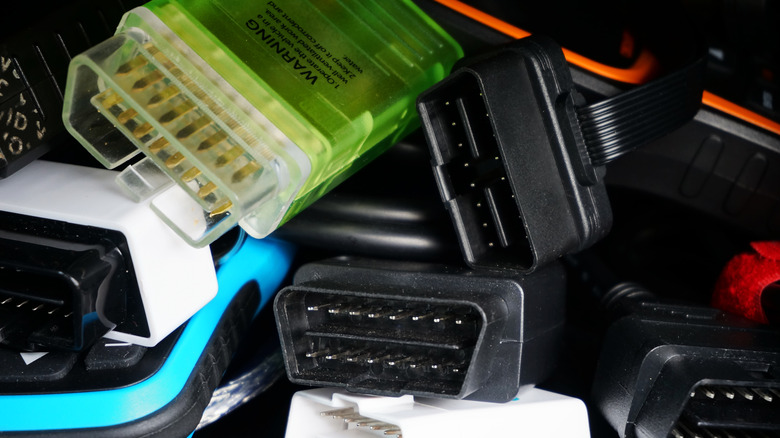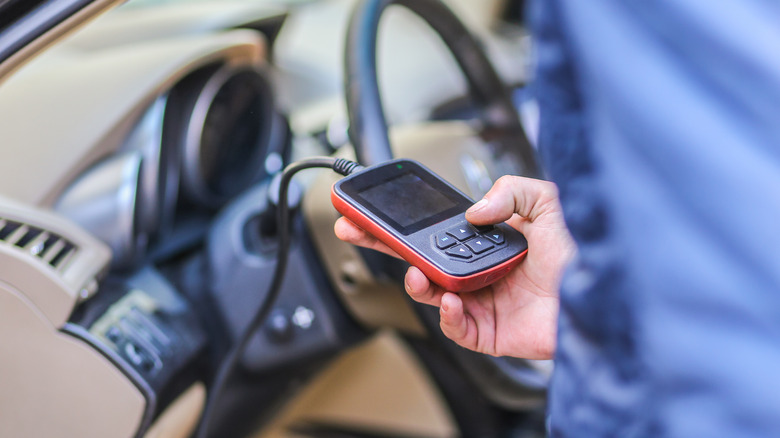OBD Ports Explained: What They Do (And Why You Need To Know)
If you own a car built in 1996 or later for the U.S. market, the odds are overwhelming that it has an OBD port. You may have even noticed its 16-pin connector lurking underneath the driver's side dashboard, but what is it? Required since the mid-1990s, OBD-II — short for Onboard Diagnostics II — is a computer system that collects all sorts of data about your car and its engine from a network of sensors. That includes fuel economy, emissions controls, and electronic components like the ignition system.
The OBD system operates quietly in the background until there's a problem with one of your vehicle's systems, which will trigger a warning light on the dashboard — typically the dreaded "check engine" light. When that happens, an ODB scanning device (also known as an OBD reader) can be plugged into your vehicle's OBD port to communicate with the diagnostic system and identify the offending issue.
Of course, car dealership service departments and independent mechanics have OBD scanners in their arsenal, but so do many auto parts stores. Some auto parts stores Like AutoZone, Advance Auto Parts, and O'Reilly will dispatch an associate to the parking lot to read the cause of your check engine light free of charge.
You can determine the urgency of the repair
Learning why the check engine light is on can be extremely helpful, even if you're not mechanically inclined. Sometimes, the problem is as simple as a dirty air filter or loose gasoline filler cap — easy fixes even for non-handy types. If the issue does require professional repair, vehicle owners can determine if the matter is urgent or whether they can continue driving for some time before addressing a repair.
Like many technologies, the price of OBD scanners has fallen to the point where they're easily attainable by car owners who wish to purchase a unit, saving that trip to the mechanic or auto parts store. Basic models start at around $30 and go to several hundred dollars. Some mid-level OBD scanners will even translate the trouble codes to plain English rather than drivers having to look up an alphanumeric in a service manual or on the internet. Others can even suggest a plan of repair.
Besides facilitating diagnostics and repairs, an OBD port can also supply information about how a car is being driven. A dongle plugged into the OBD port is how certain auto insurance companies monitor their customer's habits to determine if they qualify for a "good driver" discount. Similar products are also available at a retail level to monitor the driving patterns and location of family members, such as new teenage drivers, with the added benefits of a real-time display of the vehicle's vitals and making preventative maintenance suggestions.

